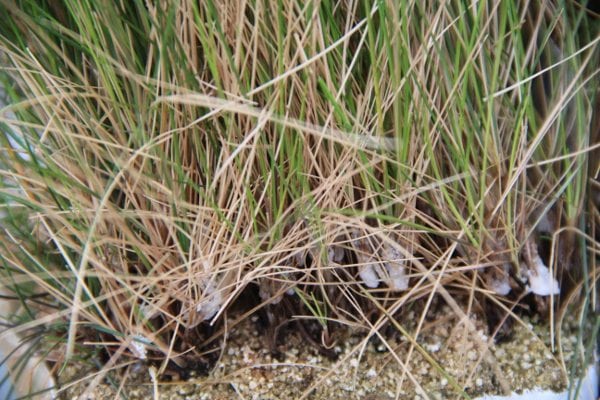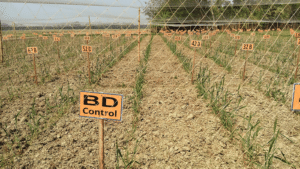During the past 10 years we have experienced a steadily increasing demand for high quality grass varieties, which are salt tolerant. In the beginning, the demand came primarily from greenkeepers and groundsmen, who maintain lawns in dry or coastal areas, where evaporation is high or where frequent penetration of seawater into the waterbed creates problems with saline irrigation. Today we get requests from a greater array of users. In northern areas for example, de-icing roads and walking paths has resulted in high salt levels along roadsides and in parks, leaving municipalities with a similar request for robust, salt tolerant turf mixtures.
Most salinity issues are related to scarcity of water resources. With increasing summer droughts, professionals, as well as private households are already today left with few other options than to irrigate with recycled water or to completely skip irrigation. Unfortunately, irrigation with recycled water during periods with little precipitation often causes a slow and detrimental accumulation of salts in the top soil. Symptoms are easily observed: Leaf tip burns, discolouration and incontrollable pest attacks.
That is why our company started seven years ago to screen its entire forage- and turf grass portfolio for salt stress tolerance. In writing these lines, we have passed one thousand varieties, which have gone through the screening program – a program, which today is standard procedure in launching a new variety.
The test is simple but very efficient and its validity has been approved under real-life conditions at an independent Dutch research institute. Briefly, well established grasses are subject to increasing salt concentrations every two weeks until almost everything is dead. Symptoms are scored on a daily basis throughout the test, and tolerance level is calculated as a combination of salt concentration and duration at which each variety can maintain up to 50 per cent survival.
These screenings have revealed great genetic potential within existing varieties, which means that DLF for several years now have been able to offer its customers turf mixtures where every component is salt tolerant. These mixtures are marketed under the name 4Salt®, and you will find them along roads, in golf clubs, recreational areas where salinity is a recurrent issue.
For future breeding, we have taken advantage of the strong selection pressure during the test, which leaves behind only few survivors at the end. These outstanding plants have been rescued and entered into our breeding pipeline where they are combined to form the basis of the next generation highly tolerant grasses. So, spare your precious tears, there is hope for even the toughest conditions.









